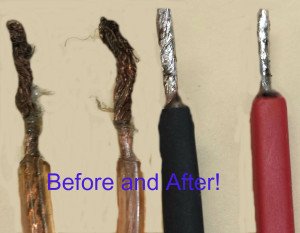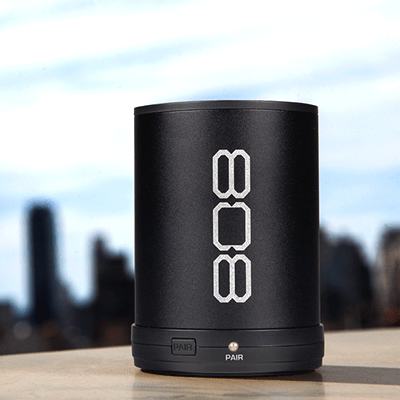Using 2 Amplifiers On Same Speaker Set: A Comprehensive Guide
Curious about whether you can use two amplifiers on the same speaker set? Well, the answer is yes, you can! But how exactly does this work? In this article, we’ll delve into the details and provide you with a solution that will help you achieve optimal audio performance. So, if you’ve ever wondered about the possibilities of utilizing multiple amplifiers for your speakers, keep reading to find out all you need to know. Let’s dive right in!
Can I Use 2 Amplifiers on the Same Speaker Set?
Using multiple amplifiers on the same speaker set is a question that often arises among audio enthusiasts. While it may seem like a tempting idea to enhance your sound system’s power and capabilities, there are several factors to consider before attempting to connect two amplifiers to a single set of speakers. In this article, we will explore the possibilities, advantages, and limitations of using multiple amplifiers on the same speaker set.
Understanding Amplifiers and Speakers
Before delving into whether it’s possible to use two amplifiers on the same speaker set, let’s first understand the basic functionalities of amplifiers and speakers.
Amplifiers: Amplifiers are electronic devices that increase the amplitude of audio signals. They take a weak audio signal and amplify it to a level that is suitable for speakers to produce sound. Amplifiers come in various types, such as tube amplifiers, solid-state amplifiers, and digital amplifiers, each with its own unique characteristics.
Speakers: Speakers are electromechanical devices that convert electrical audio signals into audible sound waves. They consist of a cone or diaphragm that vibrates in response to the electrical signals produced by the amplifier. These vibrations create variations in air pressure, which our ears perceive as sound.
The Benefits of Using Multiple Amplifiers
Using multiple amplifiers can offer several potential benefits, depending on your audio setup and requirements. Here are a few advantages to consider:
- Increased Power: By combining the power outputs of two amplifiers, you can achieve higher overall power for your speakers, resulting in potentially louder and more dynamic sound.
- Speaker Distribution: With multiple amplifiers, you can distribute the power and audio signals to different sets of speakers, allowing for multi-room audio setups or powering different speaker zones independently.
- Improved Sound Quality: Some audio enthusiasts believe that using separate amplifiers for different frequency ranges (such as one for lows and another for highs) can result in improved sound quality and better control over the audio spectrum.
Considerations Before Connecting Multiple Amplifiers
While the benefits mentioned above may seem enticing, there are some important considerations to keep in mind before attempting to connect two amplifiers to the same speaker set:
Impedance Matching
Impedance matching plays a crucial role in ensuring proper functioning and protection of your audio system. Both amplifiers and speakers have impedance ratings, typically measured in ohms (Ω). It is essential to match the impedance of your speakers with the amplifiers to avoid damaging your equipment.
- Check the specifications of your speakers and amplifiers to ensure their impedance ratings are compatible. Connecting an amplifier with a lower impedance output to speakers with a higher impedance can overload the amplifier and potentially damage it.
- Using a speaker selector or impedance matching device can help manage impedance when connecting multiple amplifiers to a single speaker set.
Inputs and Outputs
Consider whether your amplifiers have multiple inputs and outputs that allow daisy-chaining or parallel connections. The ability to connect multiple amplifiers seamlessly depends on the availability of appropriate connections.
- Examine the inputs and outputs of your amplifiers to determine if they support connecting multiple units together.
- Ensure that the connections and cables you plan to use are compatible with the inputs and outputs of your amplifiers.
Power Management
Using multiple amplifiers requires careful power management to prevent overheating and ensure optimal performance.
- Check the power ratings of your amplifiers to determine if they can handle the combined power output.
- Consider using a power conditioner or surge protector to safeguard your audio equipment.
- Monitor the temperature of your amplifiers during operation and provide adequate ventilation to prevent overheating.
Y-Cables, Splitters, and Switches
In some cases, you may need to use Y-cables, splitters, or switches to connect multiple amplifiers to your speaker set. These additional components introduce potential points of failure and can impact signal quality if not used correctly.
- Ensure that the Y-cables, splitters, or switches you use are of high quality to minimize signal loss and interference.
- Follow the manufacturer’s instructions when using these components to ensure proper connectivity.
Using two amplifiers on the same speaker set can be a viable option for those looking to enhance their audio system’s power or distribute audio to different zones or rooms. However, it is crucial to consider factors such as impedance matching, input/output compatibility, power management, and the use of additional components. Always consult the user manuals and specifications of your amplifiers and speakers before attempting any connections to avoid potential damage to your equipment.
By understanding the advantages and limitations of using multiple amplifiers, you can make an informed decision based on your audio needs and setup. With proper planning and attention to detail, you can achieve an optimized audio experience that suits your preferences and requirements.
Frequently Asked Questions
Can I use 2 amplifiers on the same speaker set?
Yes, it is possible to use 2 amplifiers on the same speaker set. However, there are a few considerations to keep in mind to ensure proper functionality and avoid any potential issues.
What do I need to consider when using 2 amplifiers on the same speaker set?
When using 2 amplifiers on the same speaker set, you need to make sure both amplifiers have compatible impedance ratings. Matching the impedance ratings will prevent any potential damage to the amplifiers or speakers. Additionally, you should ensure that the power output of the amplifiers is suitable for your speaker set to achieve optimal performance.
Can I connect both amplifiers directly to the speakers?
No, it is not recommended to connect both amplifiers directly to the speakers. Instead, you should use an audio mixer or a speaker switcher to connect both amplifiers to the speakers. This will allow you to switch between the amplifiers and control the audio output effectively.
Do I need any additional equipment when using 2 amplifiers on the same speaker set?
Yes, you may need some additional equipment when using 2 amplifiers on the same speaker set. Apart from an audio mixer or a speaker switcher, you might also require cables, connectors, or adapters to connect the amplifiers and speakers properly. It’s crucial to ensure that you have the necessary cables and equipment for a seamless setup.
Will using 2 amplifiers enhance the audio quality of my speaker set?
Using 2 amplifiers on the same speaker set can potentially enhance the audio quality depending on your specific setup. By distributing the power between two amplifiers, you may achieve a clearer and more robust sound output. However, it is essential to consider the compatibility and setup of your amplifiers and speakers to reap the benefits of using multiple amplifiers.
Are there any precautions I should take when using 2 amplifiers on the same speaker set?
Yes, there are a few precautions you should take when using 2 amplifiers on the same speaker set. Firstly, be mindful of the power requirements and avoid overpowering the speakers. Secondly, make sure to properly ground both amplifiers to prevent any potential electrical issues. Lastly, carefully follow the instructions and guidelines provided by the amplifier manufacturer to ensure safe and efficient operation.
Final Thoughts
Using two amplifiers on the same speaker set is possible, but it requires careful consideration and proper setup. Firstly, ensure that both amplifiers have compatible impedance ratings with the speakers to avoid any mismatch. Secondly, you will need a speaker selector or switch to manage the connection between the amplifiers and the speakers. This will allow you to choose which amplifier powers the speakers at any given time. Finally, it is crucial to set the volume levels on both amplifiers appropriately to prevent distortion or damage. Overall, with the right equipment and setup, using two amplifiers on the same speaker set can enhance your audio experience.






